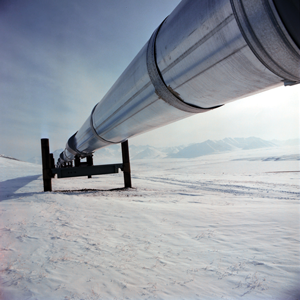Global trends
 Oil and gas consumption is increasing due to new shale discoveries, but governments will have to make a trade-off between environmental protection and economic growth, Ross McCracken told the Northern Ireland Energy Forum. Meadhbh Monahan reports.
Oil and gas consumption is increasing due to new shale discoveries, but governments will have to make a trade-off between environmental protection and economic growth, Ross McCracken told the Northern Ireland Energy Forum. Meadhbh Monahan reports.
We are “pretty much hooked” on oil and gas, particularly for transport, Editor of Platts’ Energy Economist Ross McCracken told agendaNi.
Political unrest during the Arab Spring and the continued uncertainty in countries such as Syria “is bad news” for oil prices and production. The International Energy Agency (IEA) has warned that if the Middle East and North Africa region doesn’t receive investment of $100 billion per year between 2011 and 2015, consumers could see prices rise to $150 per barrel.
1.3 million barrels of oil per day were lost during the Libyan uprising. An exporter of light, sweet oil which is easily refined into heating oil and gasoline, Libya’s removal from the market forced refiners to look for quality oil and drove up prices to a record high of $111.6 billion. In response, Saudi Arabia announced in February 2011 that it would increase production to replace the lost oil (from 8.8 million bpd to 9.5 million bpd). While it recovered the volume lost, Saudi’s medium quality oil was unable to bridge the quality gap.
Forecasters have been scaling back their expectations for 2012 because “the short-term outlook for oil is not very bright,” McCracken noted.
While Libyan oil production has resumed (the National Transitional Council is seeking investors to develop the oil sector and predicts that it will produce 800,000 barrels per day by the end of 2011), US motor fuel use is expected to fall by 230,000 barrels this year. Chinese oil demand growth has slowed in recent months and the euro crisis is deterring investors.
“Even if the EU leaders get together a deal that the markets have confidence in, it’s still going to be based on massive fiscal retrenchment and that’s going to slow economic growth,” he explained.
Europe has ambitious renewable targets which will be beneficial in tackling climate change but will lead to a reduction in wholesale prices in small countries like Ireland, McCracken told agendaNi.
He pointed to small markets with high wind penetration in Denmark, northern Germany and the ERCOT system (Electric Reliability Council of Texas) where prices have increased.
Gas is facing a positive future over 2015-2020, but its short-term outlook in Europe is clouded by the debt crisis and fiscal austerity. Shale gas has low emissions compared to coal and combined cycle gas turbine technology, a relatively low capital cost and quick build time. Gas is “a good partner” with intermittent renewables and could be “a semi-permanent bridge to low carbon future,” particularly as Europe closes coal plants and nuclear is phased out, McCracken contended.
New discoveries of gas mean that it is much more abundant than originally thought which could lead to long-term price moderation and security of supply. However, there is a need for investment in efficient and low-carbon technologies in order to protect the environment. Therefore, McCracken concluded: “The extraction of gas and oil is a political question; a trade off between economics and environment.”
Energy price drivers
Platts Energy analyst Ross McCracken’s assessment of the key factors.
Asian consumption
The continued economic growth in Asia, particularly China, is contributing to increased oil consumption (from 88.4 million bpd in 2009 to an estimated
89.8 million bpd in 2012). For example, China’s population of urban dwellers is expected to grow by 16 million each year from 2009 to 2020 and new vehicle sales increased from 500,000 in January 2006 to 1.8 billion in January 2011.
The Arab Spring
Following revolutions across the Middle East, culminating with Libya prices are $20 a barrel higher than they were at the outbreak of the Tunisian revolution. Outlining the ongoing problems, McCracken stated: “Yemen and Syria are in a position that is akin to civil war. We have new governments in North Africa that have to meet the aspirations of the revolution they have been through. We have a shift in the regional balance of power which is very hard to predict the consequences of at the moment.”
OPEC policy
Saudi Arabia is replacing the barrels lost when Libya stopped oil production, “so it’s very important to look at what Saudi policy is going to be in the next year,” McCracken stated.
In order to meet Saudi Arabia’s current fiscal needs, the price per barrel would need to be $80. However, “Riyadh has made spending commitments, in part to pacify its own period of social unrest, which implied crude oil prices closer to $100 a barrel, rather than $70-$80, which Saudi Oil Minister Ali Naimi touted as ideal.”
Also, Saudi demand for oil is “rapidly increasing and over the long term is going to eat into their export capability,” McCracken predicted.
Oil as an asset
Investors are now increasingly looking at oil in relation to a country’s other assets.
“You have an internationally priced market with a demand base which was partially decoupled when the crisis struck the OECD, unlike European and US bonds and equities. It might well do better in a recession when it comes to other investments,” McCraken said.
Future oil reserves include the Bazhenov formation in West Siberia, which is estimated to hold 365 billion barrels of recoverable oil, and Argentina.





